You chose a breed that loves the water, but that doesn’t mean your pup will automatically know how to swim! Help him learn now for a lifetime of fun together.

Why Spend Time Teaching A Dog To Swim?
Every year, an estimated 10,000 dogs drown in the United States. Most of these tragedies occur when dogs get into a pool and can’t get out. Just like people, once an animal is in the water, they quickly tire splashing about. So, teaching your dog to swim is one of the most crucial skills he can learn.
Teaching your dog to love the water while he’s young has benefits besides safety. Swimming can be a safe aerobic exercise for dogs with arthritis, those with joint or spine issues, or dogs that are overweight. In these situations, water takes pressure off the joints which reduces pain while allowing them to burn calories.
Swimming also allows dogs to burn off excess energy. It is such great exercise that owners of performance dogs (those competing in agility, flyball, herding, frisbee, tracking and obedience) often use swimming to keep their dogs in top physical condition.
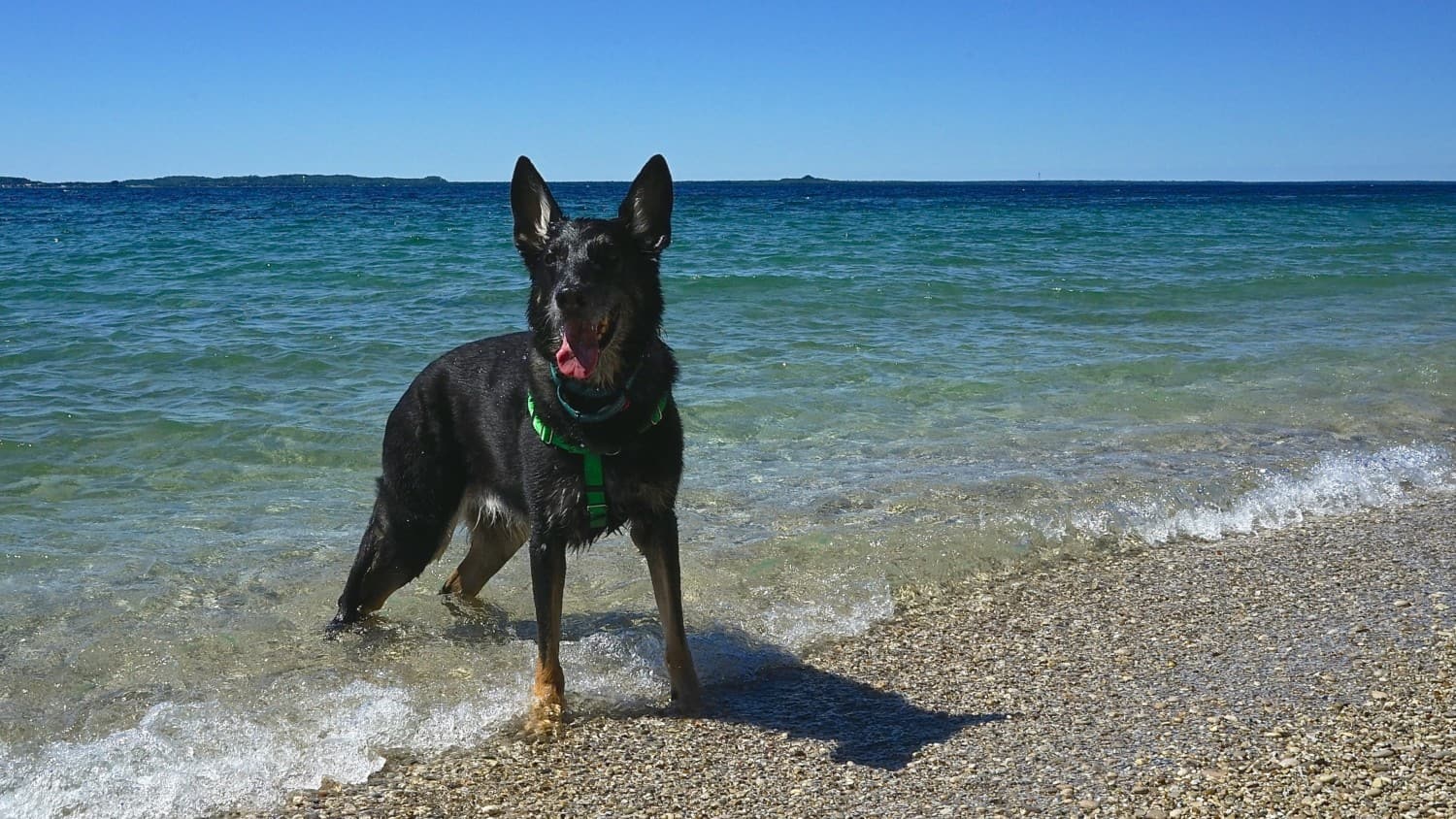
Does Your Dog Want To Swim?
Swimming is fun for a lot of dogs, but others don’t even like to get their paws wet. And some breeds are not naturally built for water sports.
The short-necked, large-chested breeds like Bulldogs can have trouble keeping their heads above water. And even some Retrievers and Spaniels need a little practice to perfect their “doggie paddle.”
So how do you determine whether your dog is a natural born swimmer? One telltale sign is if the only way he’ll get in the water is on a raft …
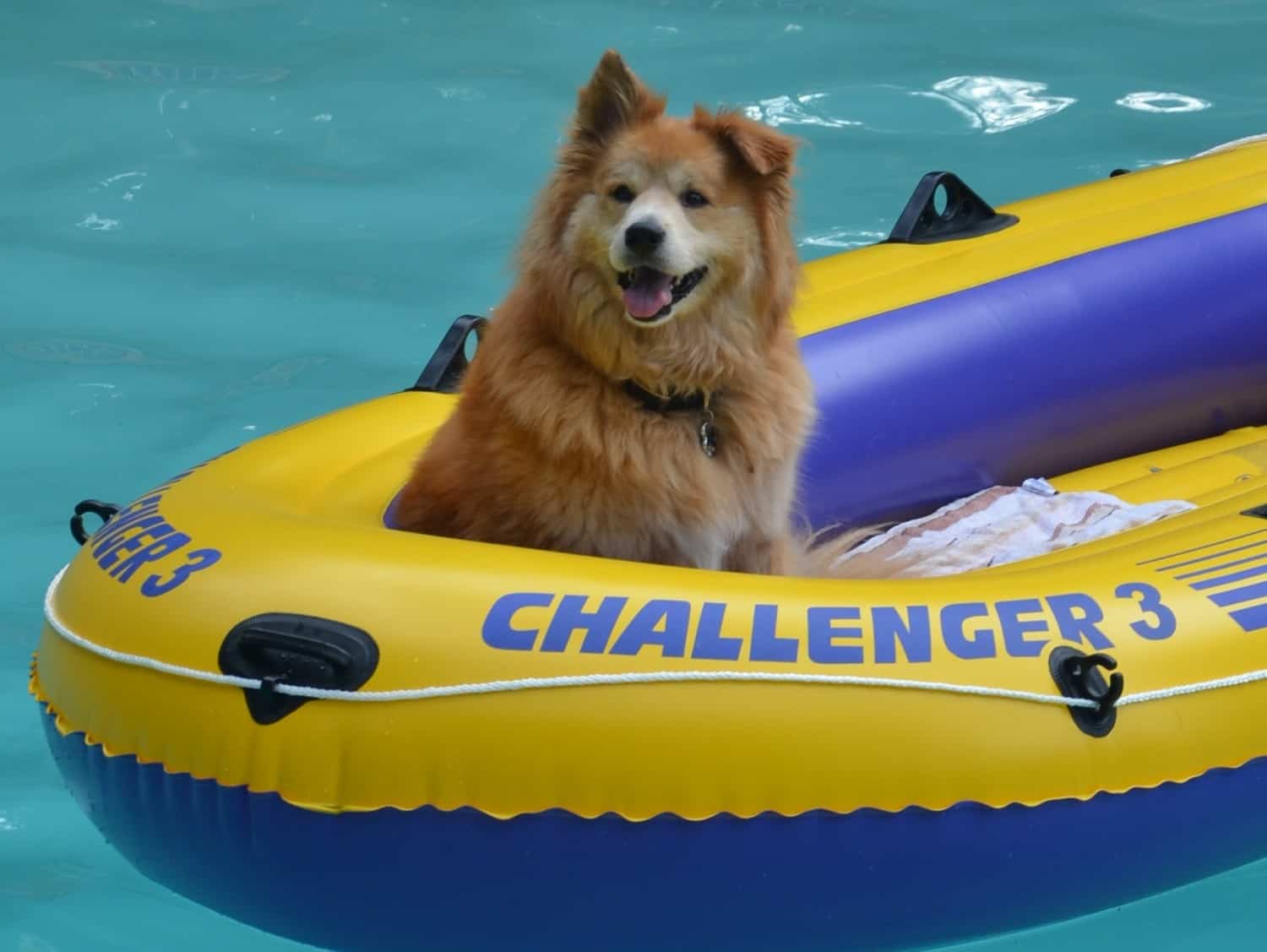
Actually, there’s an easy way to tell if swimming is one of your dog’s intrinsic skills. Hold your pup in the water. If he only uses his front legs to paddle and brings his paws out of the water, slapping at the surface, he needs some help learning to swim. With a little support from you, your pup will learn to incorporate his hind legs and tail to stay afloat.
Practice Safety First
When teaching your dog to swim, a few simple rules can make for a lifetime of fun.
- NEVER EVER leave your dog unsupervised around the water! Install a pool fence or safety alarm, and make sure your dog knows where the steps or ramp are located. You can even place a large vertical marker, such as a plant or a flag, by the steps or ramp to help your dog orient himself.
- Teach your dog to find the steps by gently placing him in the water with his feet on the top step and saying “steps” while he gains his footing. Then, take him a short distance away and let him swim to the steps, gradually increasing the distance. Stay in the shallow end, and keep the lessons short – no more than ten minutes. Dogs can’t tread water like humans and will tire quickly, unable to rest with their feet on the bottom.
- Dogs need to get used to wearing a life vest so they don’t panic in an emergency situation. Give your pup plenty of time to figure out how his life vest works so he’s comfortable wearing it in the water.
- During your lessons, maintain control of your dog by using a leash or long line attached to his dog life jacket.
- If you swim in lakes or other natural bodies of water, vaccinate your dog against Giardia, which can cause vomiting and diarrhea and can be passed along to you.
- Avoid water with a strong current, and stay away from boating and fishing areas where underwater hazards are more likely. Also be aware of stumps or rocks hidden in the water that your dog could land on when jumping.
- Avoid swimming in water over your own head. A panicked pooch may try to “climb aboard” and push you under.
- Dogs can get sunburned, too – especially around the nose and ears, so talk to your veterinarian about sunscreen made for pets, and give your dog plenty of time in the shade.
- Food stays in your dog’s stomach longer than in yours. To prevent bloat, wait 1 ½ to 2 hours after eating before taking a swim.
- Know pet first aid and brush up on your skills regularly.
- Keep the directions to the nearest emergency veterinarian on hand – just in case!
READ MORE ⇒ What You Should Know About Emergency Vets Before You Need One
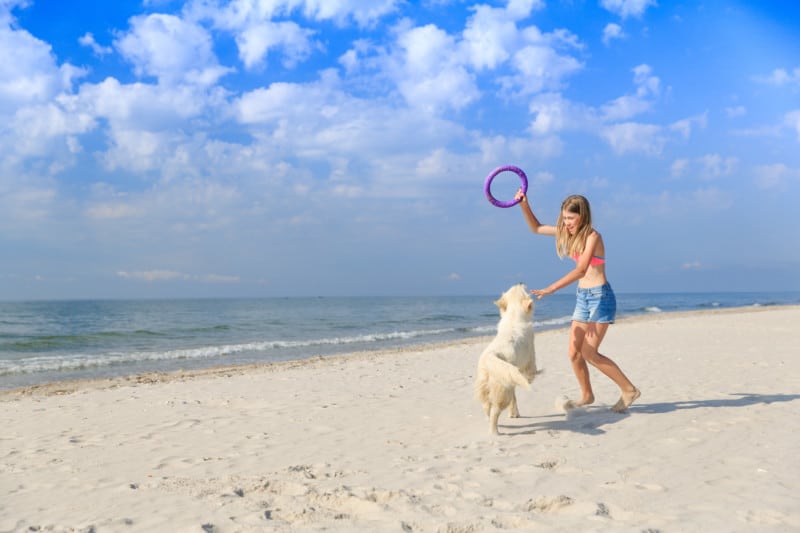
Start Slowly
When you’re teaching your dog to swim, you want to avoid bad experiences. Make sure the water isn’t too cold, and never throw or push your dog into the water. Instead, lure him in with a water toy or treat. Many dogs will be happy to wade in as long as they can feel the bottom.
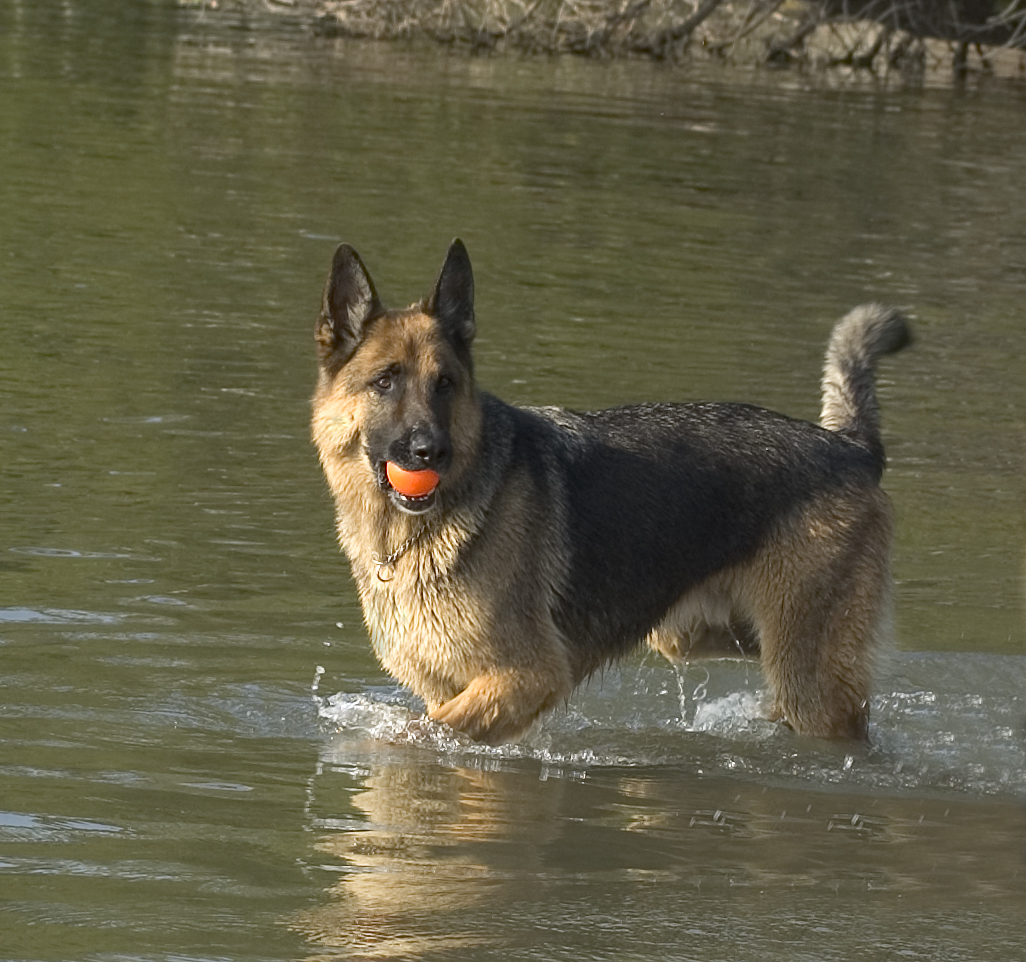
Take Frequent Breaks
Some dogs love the water and won’t want to stop. If your dog starts breathing heavily or if his back end begins to sag in the water, it’s time to get out and take a rest.
Rinse Off To Keep Your Dog Healthy
Chlorine can irritate skin and eyes, and bacteria from lakes or rivers can make your pet sick. After swimming, rinse or shampoo your dog’s coat, and take special care to dry out his ears well.
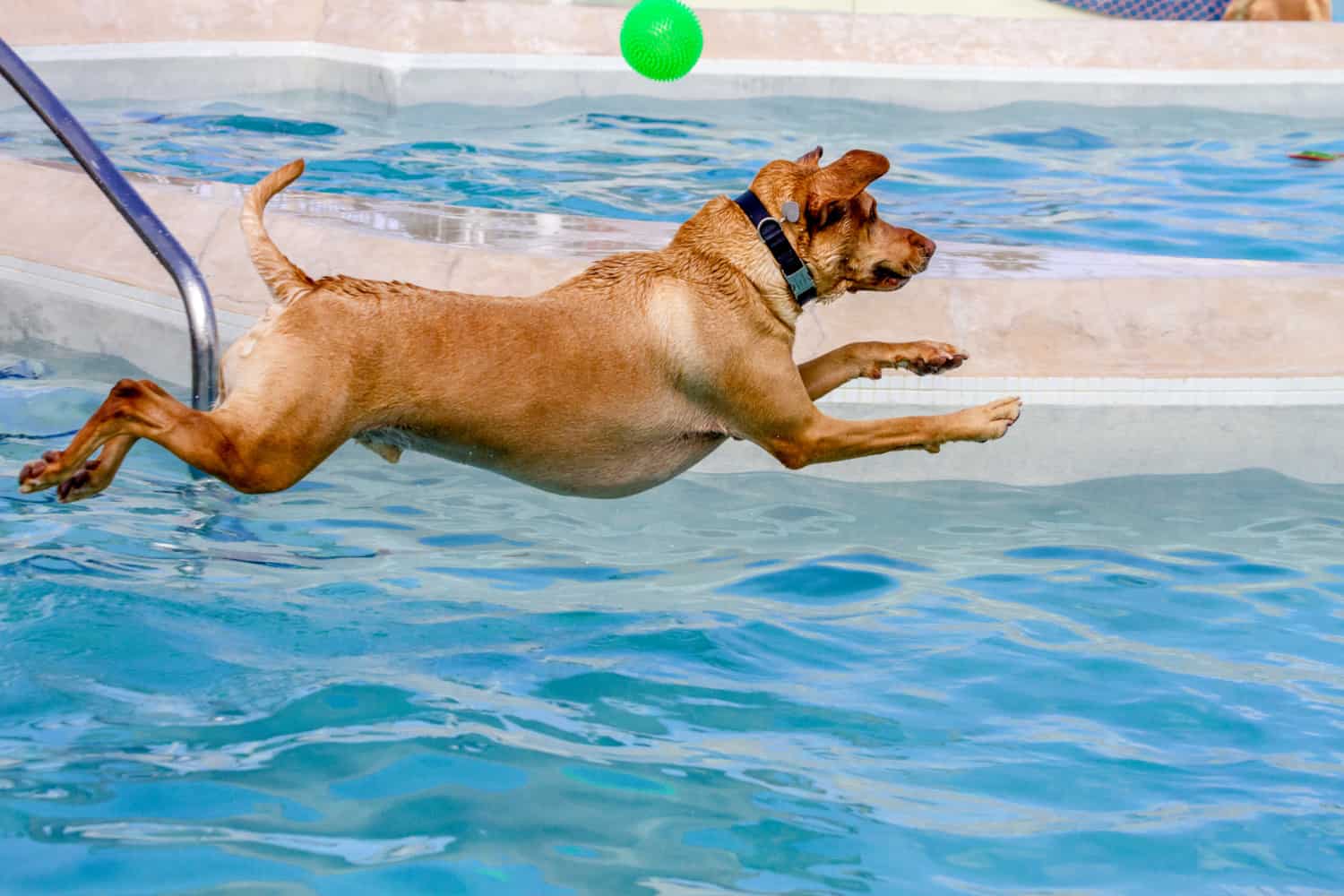
Have Fun Teaching Your Dog to Swim
Although dogs generally want to please us, you’ll know if your dog is truly enjoying the water. Every sport is not for every person or every dog! Wading in the kiddie pool might be more his speed. Or maybe he’s just a land-lover at heart. But if your dog is having fun, you will too!
More Water Sports
Once he knows how to say afloat and how to get in and out of the water, there are many other fun activities you can do with your canine buddy! Canoeing, kayaking, paddle boarding, boating, dock diving, retrieving contests, and even team swims await you and your four-legged Michael Phelps or Amanda Beard.
READ MORE ⇒ Tips for Canoeing or Kayaking With Dogs
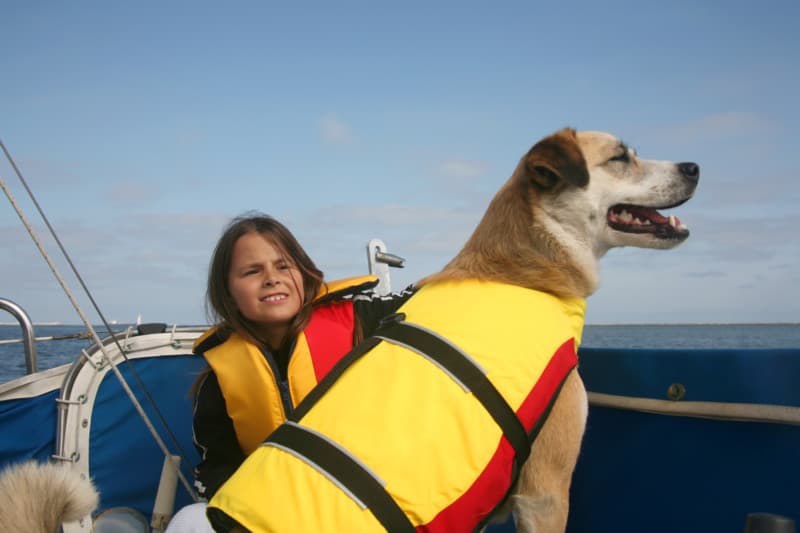
Just remember to be patient and keep your lessons short. Before you know it you and your dog will be having a great time splashing together!

About the Author: For 19 years Denise Fleck’s Sunny-dog Ink motto has been “helping people to help their pets.” And she has, teaching more than 10,000 pet lovers animal life-saving skills and millions more on national television segments. She’s a passionate advocate for animals, providing pet first aid classes, pet disaster preparedness training, and writing children’s books.
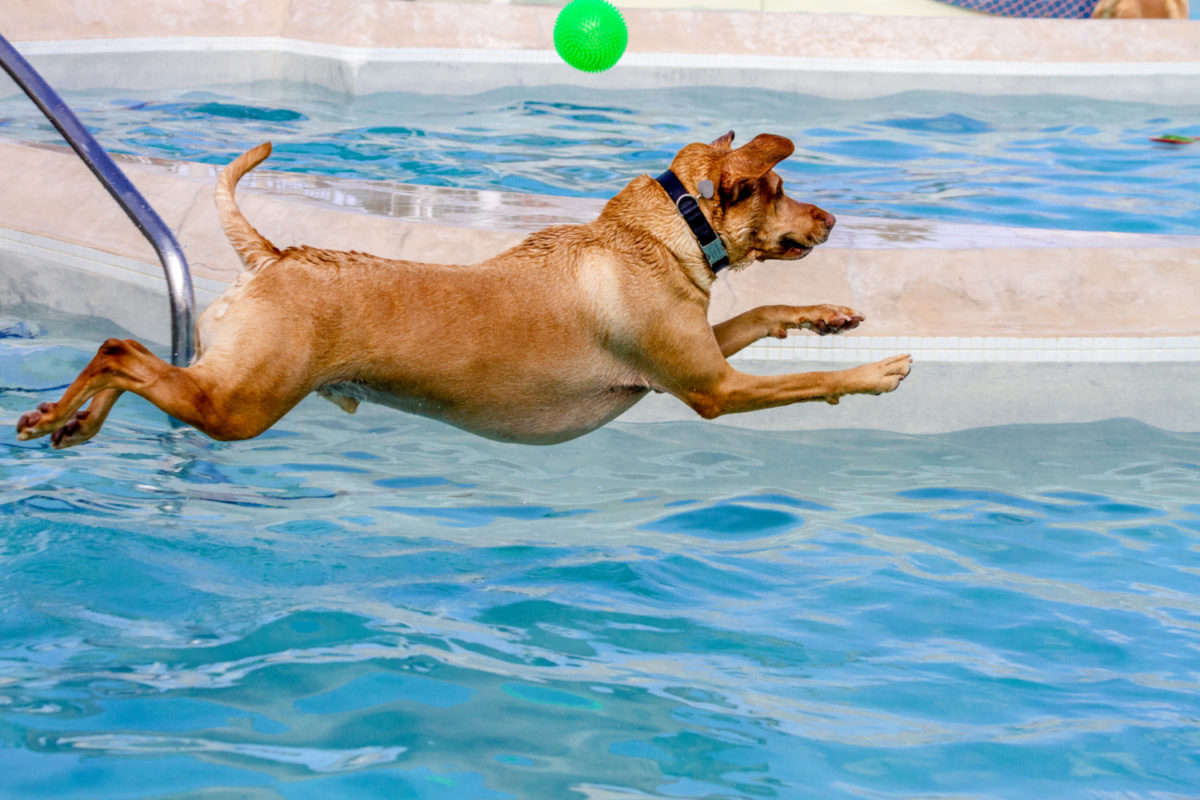
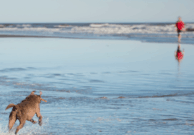




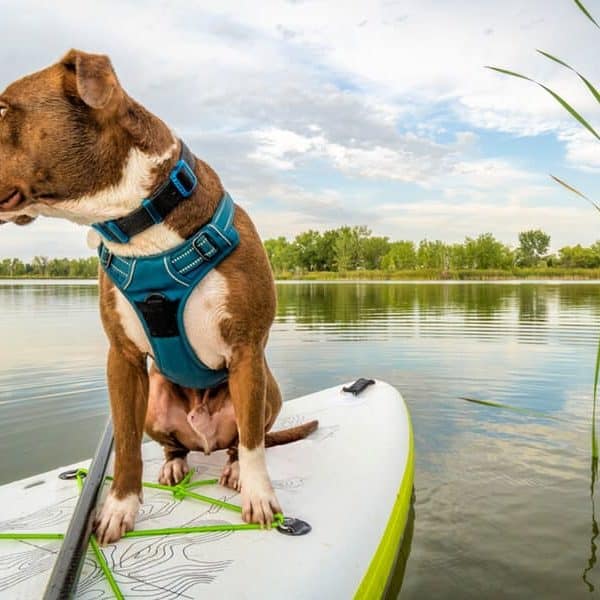





How do you know if your pup is loving swimming. Last year she walked into the lake on her own first time, but because of wind a wave hit her so she backed off. I now have a life jacket for her, so I took her in the lake yesterday. Then I carried her out into the lake & she swam to my niece . Her tail was high up…..does that mean she liked swimming even though she didn’t swim back towards. She wasn’t shaking or seeming to be scared.
Hi Julie, and thanks for your note! The best way to tell if your dog loves swimming is to see if she’ll do it on her own. Rather than carrying her out into the lake, put a long leash on her, wade out yourself, and see if she chooses to follow you. Some dogs go barreling toward the water anytime they get close. Others don’t seem to want to want to get their bellies wet. And some aren’t interested in being in the water at all. Your pup walked into the lake on her own initially, so it sounds like she at least enjoys getting wet. If you make being in the water fun with some toys or treats, it’s likely she’ll quickly overcome any fears that rouge wave might have caused. Good luck!
My oldest dog (gsp) retrieves well in the water but he appears to be using primarily his front legs so how do you actually teach or train him?
Secondly, my son’s 1 year old gsp will go into the water fine but only up to his chest. How do I get him beyond that? He loves to retrieve but won’t go past his chest. He actually fell off the dock a few weeks ago and swam well to shore so we know that he can swim fine.
Great questions, Mike! For your dog who’s not using his back legs when swimming, try gently touching his back feet while he’s paddling with his front paws. Most dogs react with a kick when their hind feet are touched, which is exactly what you’re going for! Hopefully, after a few times, he catches on.
To help your son’s dog, I’d try getting the dogs together and making the game into a competition. This could actually help your dog too, since using his back legs will allow him to swim faster. Good luck! But most importantly, I hope you all have fun.
Thanks. Will give that a try. Maybe he’ll catch on because my other dog who is 4 absolutely loves swimming and dock diving.
Yes, sometimes having another dog “teach” him is the best way to go!
Thank you so much for the suggestions! We have 3 dogs and have yet to take them to swim. Though we almost bought a pool, we moved and then immediately thought of moving again, so still no pool for them just yet, lol. Fingers crossed that we can get a pool soon!
We’re glad to help, Brian! Thanks for your note. We’ll also keep our fingers crossed for that pool. =)